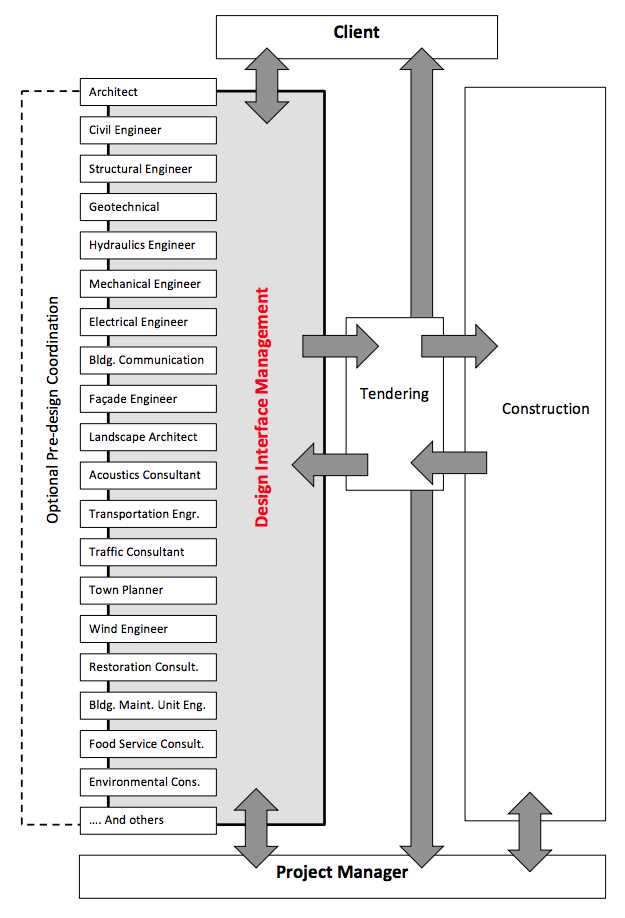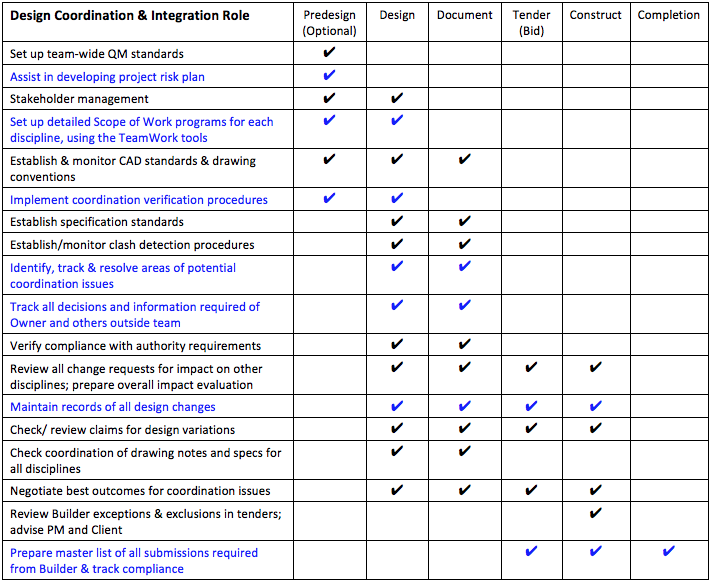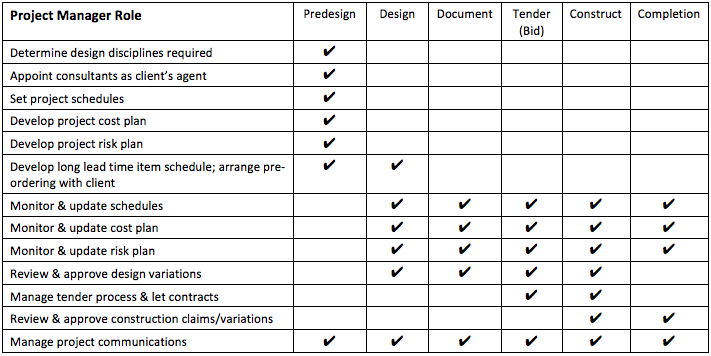Managing the Design Interface: Design Coordination & Integration
There are more than 50 distinct building design specialties. Many medium-to-large projects have two dozen or more separate design-stage consultants and sub-consultants. Some of the more common of these are indicated in the diagram on the next page.
For many reasons, the coordination and integration of the output of these large teams is often grossly inadequate. Typical consequences are project confusion, disputes, communication breakdown, delay, design and construction cost increase, compromised quality and overall diminution of intrinsic project value.
Design coordination and integration, to be successful, requires a high degree of fairly detailed understanding about how the various design processes work, and what coordination is required to ensure integration of the final documentation package.
Few project management firms have this capability, because the background experience of their key personnel is typically not in one of the architectural or engineering disciplines. While they may profess to have these skills, the most common result is that the project manager acts as a “postbox”, sending communications back and forth between the consultant team, exhorting them to do the necessary coordination between them.
When project progress starts to disintegrate, the failure – and indeed, inability – of the various design consultants to do this coordination adequately is often the main cause, or one of several interlocking causes.
A way to understand the design coordination and integration role is that it provides the “glue” that connects all of the various design disciplines together, welding them into a whole for purposes of producing construction contract documents that are as free of discrepancies, gaps and overlaps as possible.
The net results of this critical support are:
- optimum delivery time
- minimisation of rework and cost of rework
- tighter tendering results
- lower cost growth during construction
- reduced RFIs during construction
- reduced errors during construction
- less arguments, more harmonious relationships throughout
The diagram below illustrates vital interface that the role of the Design Coordination & Integration Consultant provides for conventional Design-Bid-Build project structures. A modified version can be used for other structures, such as Design-Bid-Document-Build, Novated contracts, etc.
Note that optional pre-design services can be included, or not, as desired. These services will, however, get the project off to a faster start, with much greater clarity of the roles for all team members.

The Design Interface Management Role

Notes
- Scope items in blue text utilise tools in the iProjects proprietary Design Management suite (www.iprojects.net.au).
- Detailed responsibility matrices will vary from project to project, depending on the needs of the client, the project and conditions of the project manager’s contract.
- In novated contracts, the design coordination & interface consultant would continue to be paid by and report to the client, effectively becoming the client’s representative on the novated team – to ensure that design intent was not compromised in the development of the final documentation.
- “Design” includes concept design and design development.
Role of the Project Manager
Providing a design coordination and integration service does not adversely impact the traditional project management role in any way – in fact, it supports and assists the project manager to bring projects in on time and on budget.
Services the project manager would provide under this scenario might vary from project to project, but generally would include:
